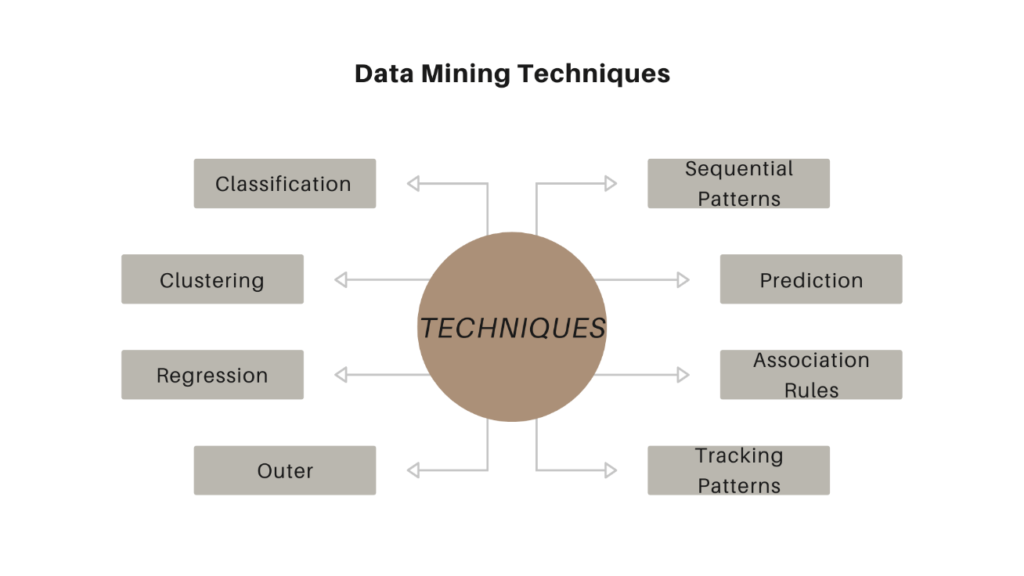Any organization that wants to prosper needs to make better business decisions. And, data mining comes in handy, and to the rescue. It enables to discover patterns and relationships in the data that facilitate faster and better decision-making.

What Is Data Mining?
Data mining is the process that extracts usable data from a bigger set of raw data. With data mining, you can uncover behavioral patterns about your customer towards your business offerings. And that’s the reason why it is also referred to as Knowledge Discovery in Data (KDD). In today’s world where data is called the new oil, data mining services have become an integral part of most businesses. It helps businesses to get a competitive edge.
Why Is Data Mining So Important?
Organizations need to make accurate and smart decisions to not only stay competitive but also increase their revenues. Data mining helps to optimize your advertising and marketing campaigns. It helps your new product launches or services to reach the right customers. Data mining can benefit your business in the following ways:
· Improves loyalty of customers towards your brand,
· Finds your hidden business profitability, and
· Reduces your client churning process.
No wonder, data mining services have become a must for every business. It helps you to learn more about your customers, develop effective marketing strategies, increase your sales and revenues, and also cut down your costs. Further, it can help you analyze the root cause of your manufacturing problems, prevent customer attrition, or profile customers with more accuracy. Data mining is also useful in detecting fraud detection and unfolding scientific discoveries.
Data Mining Implementation Process:
Before we delve into the data mining implementation phases or the various techniques of data mining, it is important to know which type of data it can be performed. The answer lies in relational databases, data warehouses, information repositories, object-oriented databases, transactional databases, legacy databases, streaming databases, text databases, and web mining.
Let’s learn about the implementation process in brief. This process can be broadly grouped into phases. It involves understanding the business, understanding the data handled by the business, preparing data for mining, transforming data, modeling and evaluating data, and finally deploying it.
It must be noted that the data preparation process is the most time consuming, it consumes around 90% of the time of the entire implementation process. Here, data from various sources are selected, cleaned, transformed, formatted, anonymized, and if required constructed.
Data transformation holds the key to the success of the mining process. In this operation smoothing helps to remove noise, generalization helps to replace low-level data by higher-level concepts, normalization helps to scale up scaled-down attribute data. The resultant data is then ready to be used in the modeling phase where mathematical models are used to determine data patterns.
In the evaluation phase, the identified patterns are evaluated against the business objectives, and finally, the deployment phase involves shipping of your data mining discoveries to the day to day business operations.
Data Mining Techniques:
The data mining process should not be mistaken as a task to generate histograms or issue SQL queries to a database. As seen earlier, data mining is all about finding the hidden, valid, and potentially useful patterns in huge data sets. It’s more about discovering, exploring, and extracting newer relationships unknown earlier. Data mining is a skill that uses a combination of machine learning, statistics, Artificial Intelligence, and database technology. The data mining techniques include Classification, Clustering, Regression, Association Rules, Outer detection, Sequential patterns, and Prediction. Let us study each of the seven steps below.
Classification:
It is a technique that helps you to obtain important and relevant data and Metadata information. It classifies data in different classes.
Clustering:
It divides information into groups of connected objects. Though similar to the classification, it involves grouping chunks of data together based on their similarities.
Regression analysis:
It identifies and analyzes the relationship between variables due to other factor presence. It defines the probability of the specific variable. It is mainly a form of planning and modeling.
Association rules:
They are if-then statements. It helps to discover a link between two or more items and helps to find the hidden pattern in the data set.
Outer detection:
This technique you may use in various domains like an intrusion, detection, or fraud detection. It relates to the observation of data items in the data set that do not match an expected pattern or expected behavior.
Sequential Patterns:
It is a data mining technique where you can evaluate sequential data to discover sequential patterns. It helps to discover or recognize similar patterns in transaction data over a while.
Prediction:
It uses other data mining techniques such as trends, clustering, classification, etc. Here past events or instances are analyzed in the right sequence to predict a future event.
Data Mining Tools:
Now that you have seen the steps involved in the data mining implementation process and various data mining techniques, it’s quite obvious you will want to know about the tools that are widely used in the industry for data mining. Well, the two most popular tools include:
R-language:
Having a wide variety of statistical, classical statistical tests, time-series analysis, classification, and graphical techniques, R-language is an open-source tool for statistical computing and graphics that offers effective data-handling and storage facilities.
Oracle Data Mining:
A module of the Oracle Advanced Analytics Database, it is popularly known as ODM that allows data analysts to generate detailed insights and makes predictions.
Conclusion:
Though there are a few disadvantages associated with data mining like the difficulty in operating or the advanced training required, the advantages far outweigh them! Data mining is a cost-effective and efficient solution as compared to other statistical data applications; it helps you to make profitable adjustments in your areas of operation and production. Being easy to implement in new systems as well as existing platforms, data mining can help you in making smart business decisions to keep you a step ahead of your competitors. Go ahead now; it’s high time to leverage data mining to its fullest.







Leave a Comment
You must be logged in to post a comment.